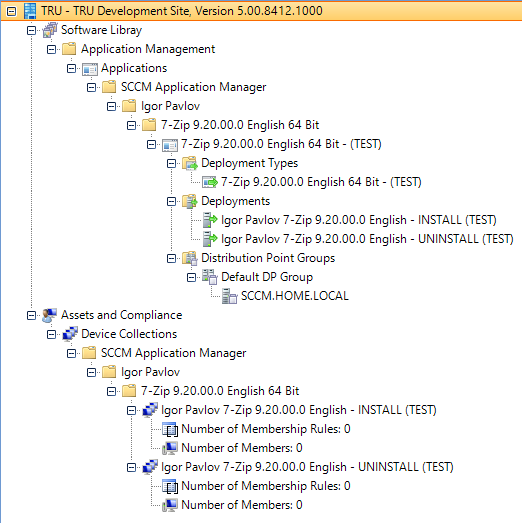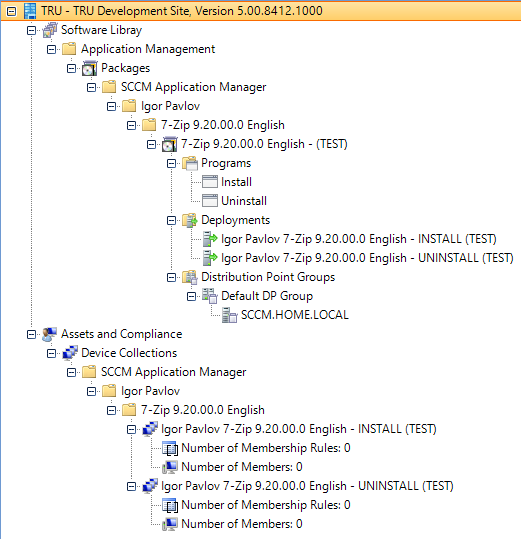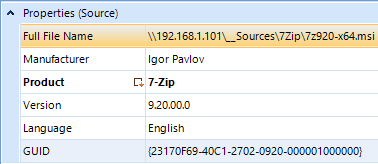Naming Conventions
One of the main features of the SCCM Application Manager is to work with naming conventions consistently. For the following examples, these naming conventions were used:
- Applications, packages and collections should basically be created below the folder SCCM Application Manager.
- The folder SCCM Application Manager should also contain a subfolder with the name of the manufacturer and another subfolder according to the naming convention Product Version Language, in which the package or application will be stored.
- For the name of the package, the application, and the name of the deployment type for applications, the naming convention Manufacturer Product Version Platform Language (STATUS) should be used.
- For deployments and collections, the naming convention for installations should be Manufacturer Product Version Platform Language install (STATUS) and for the uninstallation manufacturer product version Platform language Uninstall (STATUS). The use of install/uninstall in ensures the unique names.
The result after creating the application:
The result after creating the package:
When using naming conventions, the SCCM Application Manager is able to create hundreds of applications or packages within the Configuration Manager console according to the same schema using the same folder structure.
Place Holder
Place holders are used to define naming conventions within the SCCM Application Manager. The syntax of these place holders is: {Placeholder}. The name of a place holder is embedded in two curly braces. These place holders are replaced at run time by values. These values come from a MSI file, for example:
The properties Manufacturer, Product, Version, Language and GUID are required properties of each msi file. Accordingly, the following predefined placeholders exist within the SCCM Application Manager:
- {Manufacturer}
- {Product}
- {Version}
- {Language}
- {GUID}
These place holders are supplemented by those whose content is not taken from a source file, for example:
- {State} (the state of an application or package)
- {SiteCode} (the site code of a Microsoft® System Center instance)
- {UninstallRegKey} (the name of the registry key to use instead of a product code)
You can also define your own place holders to use later within the naming convention.
The following rules must be observed when defining naming conventions:
- The names of applications must be unique.
- The names of packages do not have to be unique, but they should be, to avoid duplicates.
- The names of collections must be unique.
- The names of deployments must be unique for applications and packages.
- The names of programs within a package must be unique.


